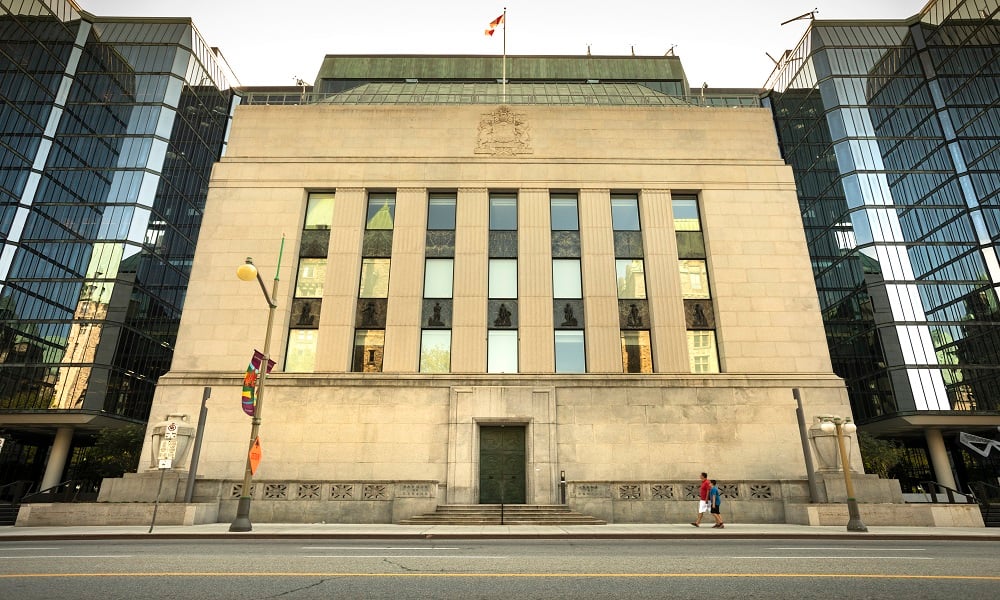Why the risk-reward on HELOC borrowing 'has become a lot more interesting than it was two months ago'

As the environment of interest rates and bond yields in Canada gets more complicated, both current and would-be HELOC holders should exercise caution as they consider taking on that debt, suggests one authority on the space.
In a recent survey of Canadian homeowners, RATESDOTCA found that just over one in four Canadians have a HELOC, with just over 50% having an outstanding balance on that debt. Around 10% said they had borrowed more than $100,000 on it, while the majority said they borrowed less than $50,000.
“When you're talking about Toronto home prices, $50,000 might seem small, but you never know someone’s individual financial condition,” says John Shmuel, Managing Editor of RATESDOTCA. “A $50,000 HELOC with interest rates rising could be significant for a retiree who has a fixed income. And now the monthly payments are going up at a time when inflation is causing everything to go up.”
For many Canadians, HELOCs have been a convenient vehicle to obtain financing for various purposes, such as home renovation. Debt consolidation is another popular use for the products, with 30% of respondents saying they use HELOCs for debt consolidation because of their relatively lower interest rates compared to other consumer debt products.
HELOC holders are bracing themselves for higher payments as the Bank of Canada is widely expected to raise its policy rate by 75 basis points this week, and possibly take it beyond its neutral 2% to 3% range before the year ends. For a household with a HELOC of $65,000 at 3.7%, interest-only monthly payments would amount to $200 per month; a 75-basis point increase would have that same household see an additional $41 per month on their monthly interest payments.
If the central bank announces a 100-basis point increase, that same household would see a monthly HELOC payment increase of $55 to $255.
However, Shmuel says the five-year Canada bond yield has come down rapidly within the last several weeks, after peaking at 3.5% in the middle of June. The yield on the five-year U.S. Treasury has likewise slipped below 3%.
“There’s been a drastic decrease in bond yields over the past few weeks because recession risks have been heightened,” Shmuel says. “Over the last few weeks, we’ve been getting data from the Eurozone, the U.S., and Canada that portend potentially bad economic outcomes, so there’s heightened fear right now.”
Already, Shmuel says some mortgage providers have announced cuts to their fixed-rate mortgages which, while modest, are movements that haven’t happened in a very long time. So while two months ago, it was clearly a bad time to get a HELOC – “there was nothing redeeming in the data to suggest mortgage or interest rates were going to come down” – he says it’s not as clear today.
“Right now, the probability is that the Bank of Canada will raise interest rates more aggressively. But the middle to long term looks a little cloudier,” he says. “This is not a time for someone who doesn’t have a lot of flexibility to go and take out a big HELOC. But for anyone who can take on risk from a variable interest-rate product, the risk-reward is a lot more interesting now than it was two months ago.”
Recognizing the elevated risks that Canadian borrowers face in this environment, the Office of the Superintendent of Financial Institutions (OSFI) recently announced expanded guidance on real estate-secured lending products. Among other clarifications, it said borrowers with combined loan plans (CLPs) would be unable to reborrow on a HELOC if the entire mortgage’s loan-to-value ratio was 65% or more.
To Shmuel, the announcement was a move in the right direction. The fact that HELOCs can be serviced on an interest-only basis might have worked in a low-rate environment, he says, but today that feature puts more current or prospective users of HELOCs at potentially more risk.
“I think what OSFI did will help people protect themselves from taking on debt they can’t afford,” he says. “Could they revisit the rule that in the future, if things were to change? That's an interesting thought. But for now, I think it was a prudent move.”



